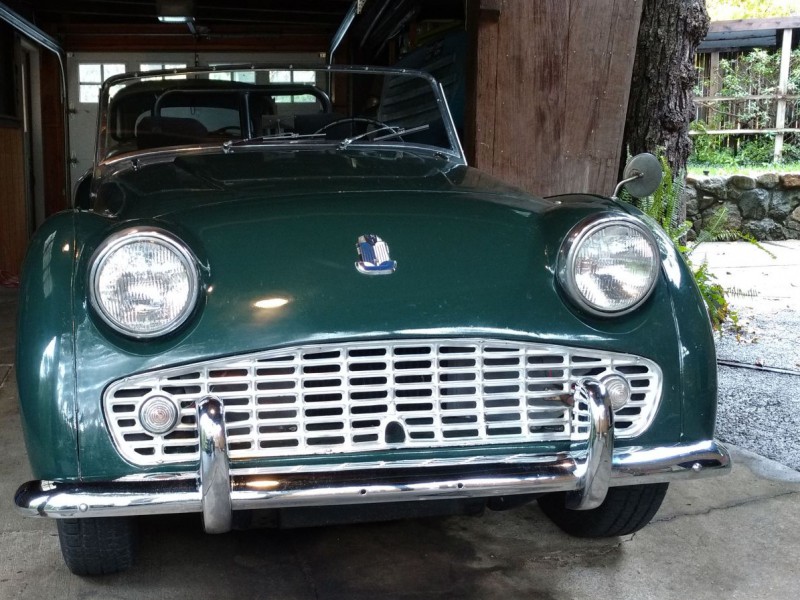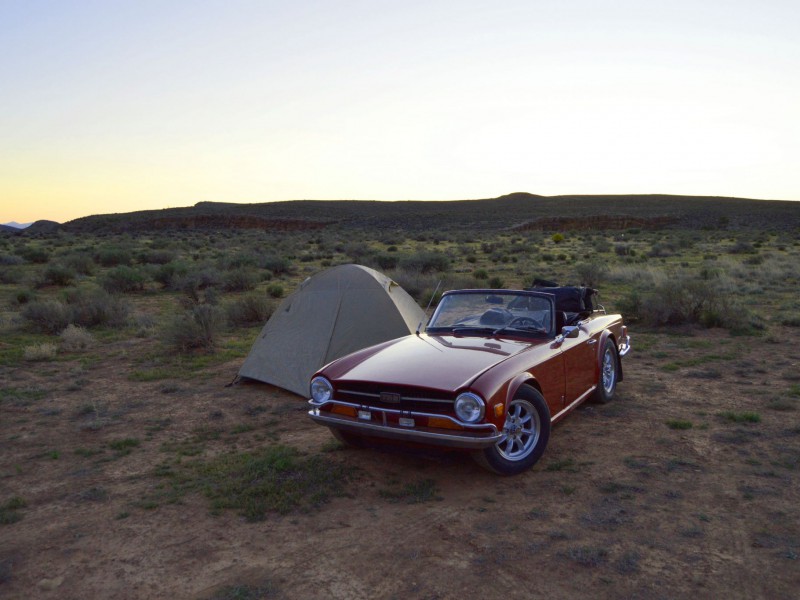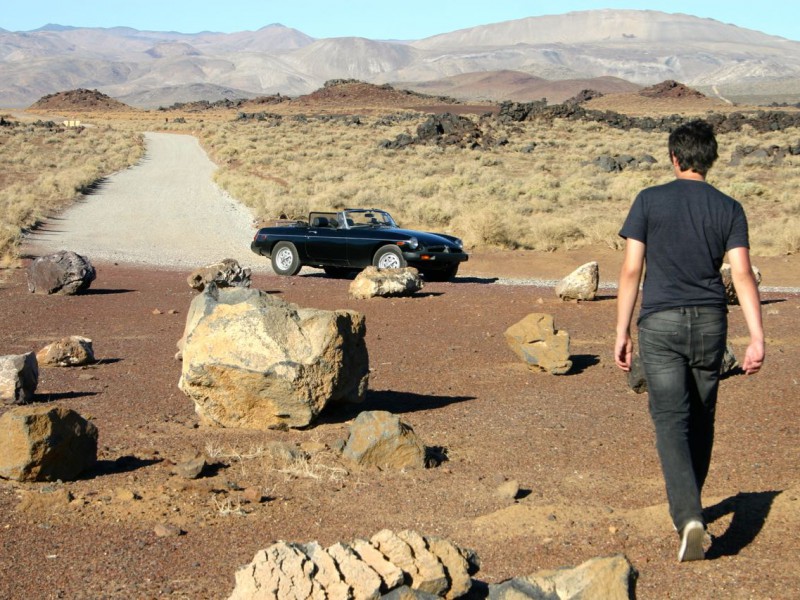By David Stuursma- and with the 6-pack crew, too
I’m a lurker. One of my daily tasks is to log onto the 6-Pack.org Forum and keep a lookout for conversations about Moss Motors, our parts and our service. There are other Moss employees on other forums, too. Online forums are a fantastic resource for many reasons—on our end, they help us do our job better and open up a direct line of communication to an entire community. The 6-Pack members know I’m there and will often message me if there’s a Moss-specific question. How great is that?!
Lurking is like people watching at the airport. I get to see people’s character comes out in their writing, and on 6-Pack this is a treat. Such kind, helpful and talented characters they are. There’s one guy in particular whose posts intrigue me. Every so often he writes modest notes saying: “Hey guys I finished such-and-such project and here’s the link to my write-up.” I can’t click fast enough. I’ve got to see what he’s been up to. Surf his site and you’ll see why.
I’ve wanted to do this for quite some time; let me introduce you to Ed Hollingsworth.
On the forum Ed flies under the radar. He’s not flashy or showy, but when a post by Ed_H shows up, ears perk up—and not just mine. For example, here’s what 6-Pack member Chris Baggett has to say:
This guy… appears on 6-Pack one day. No big “hey, I’m here!” Nothing. Just starts posting about this jalopy akin to Chitty Chitty Bang Bang. And in this Midwest garage, starts disassembling it and sharing his progress. Each time you scroll through his Bullfire website, you stop, look at his comments, the work, and you sit there almost speechless. So, you back up and re-read it again. Little things go through your mind like, “Why hasn’t anyone thought of that?” or “Why would you restore that?—just replace it!” And then you see his restored washer motor, for example, and it is lovely.
His work goes beyond what most of us would do. Take a trailing arm for example, and how I might power wash it, media blast it, and maybe rattle can some of the parts, and reassemble. No. His stuff looks like a Triumph parts guy in 1976 walked back behind the counter, and came back with this factory replacement part. I’ve been around a lot of restorations. I’ve been through many restoration shops, and seen the progress of a full restoration. This guy, in the middle of Nebraska, seemingly almost off the grid, has this vision of what this marque needs, and just gets out in the shop and turns the vision into reality.
Ed is a renaissance man, at a time when antique cars are in a renaissance.
It really does not matter what kind of car you own. Even if TR6s aren’t your thing, craftsmanship can be universally appreciated. But be aware, once you start reading, it’s hard to stop. Myself, as a frugal Dutchman, I love reading about how Ed feels he spends little money since he’s doing repairs himself on original parts. The rationalist in me, though, can’t help but tally the hours he’s spending. His dedication at times borders on the monastic. Funny thing though, at just about exactly the time my mind starts struggling to see the point of this monumental effort, Ed says something simple like, “It was an enjoyable day in the shop.” Instantly my bean-counting brain cells take a deep, healing breath. He does what others would do if they had the time, and bless ’im for that. Too few people take this approach. And even fewer document their work for the benefit of others.
I asked Ed to say a bit about his background. He wrote:
I can trace my fondness for Little British Cars all the way back to my high school days in the ’60s. While the other guys were lusting after Corvettes and Mustangs, my fancy was plucked more by the British roadsters—especially the then pretty new Triumph TR4. The compact, nimble size, the open cockpit, the spare, muscular style all spoke to me. It was well out of my price range though, so my first vehicle was actually a quirky ’54 Renault 4CV with cool suicide doors and 21 blazing horsepower.
It was a few years later that I finally bought my first LBC—a ’57 MGA. I found it in a backwater used car lot in Colorado Springs, snuggled between a quaint little MGTD, which I thought might not be reliable enough, and an absolutely seductive XK120, which I couldn’t afford. The MG was my sole means of transportation for a few years while I was in the service, and later in college. It was worn and never very trustworthy, but the frequent roadside repairs were usually pretty easy, so it met my needs at the time.
When it dawned on me one day that I was about to get a real job, I decided I needed something I could count on a little more. A nice little ’69 Triumph GT6 came along, and I jumped at it. Though not a roadster, I liked the style, and the heater worked. Not willing to totally give up on the MG, I stashed it in my parent’s garage where I gradually rebuilt the engine and did a lot of needed body work.
As the Triumph aged and slowly became less dependable, I moved on to a more “sensible” car. It’s funny, but I can’t even remember what it was now—that says something, doesn’t it? But, thinking that the GT6 hadn’t really come into its day yet, I decided to stash it away, too.
I eventually got tired of driving a boring car, and went looking for something more interesting, like considering to Purchase a Pickup Truck or a New GMC truck for sale. I landed on a direct descendent of the TR4—a yellow ’74 Triumph TR6. The six retained the husky, squarish brawn that I loved about the TR4, but had a bigger engine. The car was only a few years old when I bought it, so it was relatively reliable as LBCs go, but still not a great car for Midwest winters. I put up with that for a few seasons, and finally caved in and bought a pickup truck for winter driving.
By this time, I was married and had a house with a big enough garage to keep the MG and the two Triumphs (all in one stall!). My career and family life kept me too busy to do anything besides dream of the day when I’d have the freedom to give the cars some attention.
They slept in the garage for close to 30 years by the time I finally retired in 2013. The same week I retired, I drug the TR6 out from its space and pulled the engine. It’s been nearly a full-time job ever since. I don’t seem to be getting tired of it, and still look forward to getting to the other cars.
I guess I’d call what I’m doing with the TR6 a resto-mod. I want the car to look, feel, sound, and drive like a TR6, but if I see an area that I think I can improve, I will usually do it. I’m keeping a running chronicle of the project on my web site, but it’s as much for my own use as for others. I refer back to it pretty often.
I learn something nearly every day on the TR6 project. Since my education and experience is in Electronics Engineering, I understood the electrical stuff pretty well, but my mechanical skills have all been self-taught. Of course, that’s not hard when you enjoy it, and when you have such a great resource as the online community of LBC enthusiasts. TR6 and other LBC forums channel an enormous reservoir of expertise and subject matter wisdom—for free!
Ed is a valuable member of the 6-Pack community, and an inspiration to all who restore these classics. Do take a look at Ed’s Bullfire.net website. And don’t let its very simple structure mislead you; the content within is absolutely gorgeous.
Brief excerpts from Bullfire.net
Dog Years



The top picture was taken back in May, 2014 when the body had just been taken off, and the frame power washed. Even though it may not look like it from this distance, the difference between the threee pics is hundreds of hours and many hundreds of dollars. The center photo is from October, when I had just attained the milestone of a rolling chassis, and was about to put it away for the winter. The one on the right is almost exactly one year later. The tub is now done, and I’m prepping the chassis to receive it. This entails mainly the drivetrain and the chassis plumbing—brake and fuel lines.
Calipers

When there is a pair of items on a car, I usually try to do one at a time so I have the other to refer to.
Ball Joints


Most of the ball joint parts live out their lives bathed in grease, so plating is unnecessary. The exception is the rod part of the tie rods. These are at least partially exposed to the elements where the gaiters don’t cover. I thought zinc plating the tie rods would be worthwhile, but didn’t want to interfere with the nice surface of the ball. I ended up selectively plating the tie rods by spraying a couple of coats of lacquer paint on the ball parts to act as a resistant to the plating. Lacquer dries fast and is easy to remove. It worked out well.
I also invited (without Ed’s knowledge) a handful of 6-Pack members to share their thoughts on Ed and his work.
I’m certain many others would have loved to speak up, too.
Ed took me by surprise as I suppose he did a lot of us who frequent the 6-Pack.org Forum. Parts, large and small, brought back to life thru Ed’s thoughtful and creative efforts and techniques are something to behold. I have a feeling what we’ve seen is only the tip of the iceberg as far as Ed’s accomplishments. What a legacy he’s leaving for us current and future TR6 owners.
-Ken Dolhonde aka “poolboy”
I benefit from Ed’s work and blog as he is just ahead in the restoration process from me. I look forward to each installment so I know how to do it right. Invaluable advice for my first-time restoration.
-Paul Thiele
Ed is a true craftsman. He likes to give new life to the car’s original parts. Usually they are better than new after he repairs them—no shortcuts or cut corners with Ed.
Ed takes great pictures and notes in his detailed step-by-step effort in documenting his work, complete with sizes and measurements for others to learn from and follow on their efforts.
I have saved most of the articles in hopes that someday they will help if I ever have to use them.
-Luis Mijares
I have read many books in my 35 years restoring Triumphs, and no one until Ed has documented the restoration of each individual part with great step-by-step instructions of how he did it. He needs to write a book. So glad he has done this for the 6-Pack community.
-Mike Richardson
I am going through a project and have referred over and over again to Ed’s site. Including frame, body work, meticulous stuff that I couldn’t find answers to—he answers my most challenging questions. Ed also chimes in on my build from time to time, and it’s so refreshing to see his name knowing he’ll offer pointers and/or just give me a thumbs up on my progress. He is phenomenal!
-Dne’ Weir
Without question, the quality and resourcefulness of Ed’s accomplishments, are simply astounding, even to the other competent restorers that frequent the 6-Pack site. He is certainly light years ahead of my own capabilities, and so far has refused my request that he adopt me.
-Bruce Waller








'Garage Hero' has 1 comment
February 6, 2017 @ 11:12 am Kevin
Starting to explore reason for my 1952 MGTD overheating